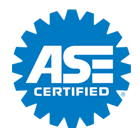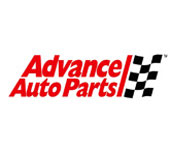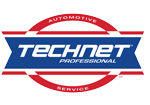The Car Doc On The Island Guide to Caring for Your Transmission
Posted September 30, 2018 8:26 AM
Most vehicles have automatic transmissions, yet a lot of Venice drivers only have a fuzzy understanding about what a transmission does. Think back to the last time you rode a bike in Venice. You started out in a lower gear and shifted to higher gears as you went faster. Down shift for hills, stuff like that. Think of your legs as the engine – there's an ideal speed you can pedal and you change gears to leverage the work you're doing.
Lower gears for power on hills or for starting out. Higher gears for more speed. That's what the automatic transmission does – it automatically starts in lower gears and shifts up to higher gears to go faster on FL roads. And it automatically shifts back down to climb Venice hills, pass or start up again.
Vehicle automatic transmissions have certainly gotten more sophisticated in recent years. They have more speeds than before: the base is four speeds, five is very common.
At Car Doc On The Island, we routinely service transmissions with six speeds and several have seven or even eight speeds. As you can imagine, this means more parts. Any they all have to fit into roughly the same space.
Transmissions are computer controlled these days, with some high end transmissions having two or three computers. Transmissions are engineered to last. But they are also engineered to tighter tolerances. If a portion of the transmission is starved for lubrication, it can lead to failure.
Not enough fluid can starve the transmission, or dirty transmission fluid can clog small passages in the transmission. Then the lubricant is blocked and can't get to all the parts to protect them, so they wear out prematurely. The technicians at Car Doc On The Island see far too many transmissions that needlessly failed due to neglect.
And, as you can imagine, repairing one of these new transmissions at any Venice service center can be quite costly. That's why owner’s manuals have a schedule for how often you should change the fluid and what type of fluid to use.
It's really important for Venice area drivers to carefully follow the manufacturer's transmission service schedule.
At Car Doc On The Island in Venice, we hope you never become shiftless in Venice because you didn't take care of your transmission.
Car Doc On The Island
419 South Tamiami Trail
Venice, FL 34285
(941) 786-1595
http://www.cardocontheisland.com
How Much is Enough for Venice Auto Owners? Tire Tread Depth
Posted September 23, 2018 7:52 AM
Most Venice drivers know that tires wear out and that the wear has to do with tread depth. Most of us have heard that “bald” tires are dangerous, but most of us picture a tire with no tread at all when we think of a bald tire. And when we take our vehicles in for preventive maintenance, the technician tells us they're need to be replaced long before all the tread is worn off. Just how much tire tread wear is too much? And how can you tell? Tires are and their condition is important to the safe handling of a vehicle, so it's for Venice vehicle owners to know the answers to these questions.
First of all, it's important to understand that there may be a legal limit to tread wear. If your tires are worn past this limit, you have to replace them to be in compliance with FL auto safety laws. That's why measuring your tread wear is part of a vehicle safety inspection.
In some jurisdictions, tread must be at least 1.6 millimeters or 2/32 of an inch thick. This standard has been in effect since 1968. But this standard has recently been called into question, and some FL professionals are arguing that it be changed.
The safety issue that has brought this standard under scrutiny is the ability of a vehicle to stop on a wet surface. When a vehicle has trouble stopping, most Venice drivers immediately look at the brakes as the source of the problem. But tires are crucial to safe stopping distances because they provide the traction required in a stop.
A tire's contact with the road surface creates traction, which allows for effective braking. On a wet surface, a tire only has traction if it can get to the road's surface. So tire tread is designed to channel water out from under the tire to allow it to stay in contact with the road. If the tire can't shift the water, then it starts to “float.” This condition is called hydroplaning. It is very dangerous for Venice drivers since the vehicle won't stop no matter how hard the driver presses the brakes. Steering control is also lost.
A recent study tested the stopping ability of a passenger car and a full-sized pick-up on a road surface covered with only a dime's depth of water (less than a millimeter). The vehicles were traveling at 70 mph (112 kph) when they stopped on the wet surface. At 2/32 (1.6 mm) tread depth, the stopping distance was double that of a new tire. The passenger car was still traveling at 55 mph (89 kph) when it reached the stopping distance it experienced with new tires.
Let's suppose that you're on a busy Venice road in a light drizzle and a vehicle stops suddenly in front of you. You just bought new tires and you brake hard, missing the vehicle with only inches to spare. If you hadn't bought those new tires, you would have crashed into that vehicle at 55 mph (89 kph). That is a major difference.
What if your tires had a tread depth of 4/32 (3.2 mm)? You would have crashed into that vehicle at 45 mph (72 kph). Still not a good situation. But it's better.
Now what if you were driving that pick-up truck? You wouldn't have missed that vehicle in the first place, and you would have crashed at higher rates of speed in both of the other scenarios. The heavier your vehicle, the longer its stopping distance. It's a matter of physics.
The results of this test has led Consumer Reports and others to ask that the standard for tread wear be changed from 2/32 (1.6 mm) to 4/32 (3.2 mm). The increased standard will improve safety on the road and save lives here in FL and nationally.
Of course, until the standard changes, you'll have to decide whether you'll be willing to replace your tires a little sooner.
You can use an American quarter to tell if your tread wear is down to 4/32 (3.2 mm). Place the quarter into the tread with George's head toward the tire and his neck toward you. If the tread doesn't cover George's hairline, you're under 4/32 (3.2 mm). With a Canadian quarter, the tread should cover the digits of the year.
You can measure the 2/32 inch (1.6 mm) tread wear with a penny. If the tread touches the top of Abe's head, it's at 2/32 (1.6 mm). Tires are super important when it comes to vehicle care. But their condition has a major impact on safety. We need to decide whether to sacrifice safety for economy. Keeping our tread wear above 4/32 in (3.2 mm) is good auto advice.
Car Doc On The Island
419 South Tamiami Trail
Venice, FL 34285
(941) 786-1595
cardocontheisland.autotipsblog.com
Automotive Tips from Car Doc On The Island: Serpentine Belt Overview
Posted September 16, 2018 3:28 AMThe technicians at Car Doc On The Island know your serpentine belt drives important engine accessories like your alternator, air conditioning compressor, and power steering. In some cars it may also power the power brakes or water pump. The serpentine belt is powered by the engine and winds around pulleys and the accessories. Some cars in Venice have two serpentine belts.
The serpentine belt, the belt tensioner (which maintains the appropriate tension on the belt) and the idler pulleys are together known as the accessory drive system.
Now your serpentine belt and the belt tensioner will just wear out over time – that’s why your vehicle manufacturer has a scheduled belt replacement interval. The team at Car Doc On The Island in Venice can inspect your serpentine belt for wear and get it replaced if it’s time.
Give us a call.
Car Doc On The Island
419 South Tamiami Trail
Venice, FL 34285
(941) 786-1595
http://www.cardocontheisland.com
On Board Diagnostics for Your vehicle
Posted September 9, 2018 2:29 AM
Today we're going to talk about on-board diagnostics and the questions we hear from folks around Venice, FL, who need answers about diagnostic services. They want to know what diagnostics are, what's involved and what the benefits are. They really want to understand the value of diagnostic scans by a trained technician in Venice.
These are valid concerns. If you don't understand something it's really hard to know its value. Let's start with some history.
Since 1996, all cars and light trucks in Venice, FL, have been required to use a standardized diagnostic system to help repair technicians determine what's wrong with your vehicle. The diagnostic system works with the vehicle's Engine Control Module – the computer that controls many engine functions.
The computer monitors dozens of components and processes. Depending on what the sensors read, the computer will make adjustments to compensate for conditions and minor problems. When there is a condition that it can't adjust for, the computer will turn on the Check Engine light.
It is also called the 'service engine soon' light on some vehicles. The warning light signals you to get into your local service center so that the trouble code can be read and the problem can be fixed. Your service center will have a scan tool and powerful software that will help the technician diagnose the problem.
If you've searched for Check Engine light on the internet, you may have seen that you can buy an inexpensive scanner or go to an auto parts store to have the trouble code read to tell you exactly what's wrong.
That's a common myth. The code itself doesn't tell you what's broken. It starts you looking in the right place. It tells you what engine parameter is out of range – but it won't tell you what's wrong or how to fix it.
Let's say you think your daughter has a fever. You take her temperature and it reads 102 degrees F/38.9 degrees C. You've confirmed a fever, but you don't know what's causing it. Is it a 24 hour flu, an infection, appendicitis or leukemia? A fever is a symptom of all of these medical problems, but it takes a skilled physician's examination and additional diagnostic tests to find out what is actually causing the fever.
An example of a trouble code could be: P0133, which reads 'Bank 1 sensor 1 circuit slow response.' This means that the front oxygen sensor has a slow response time to changes in the air-fuel mix. If that's all you knew about cars, you would think your oxygen sensor was broken and would replace it. Now, it could be the oxygen sensor – but it could also be a bad or contaminated airflow sensor, exhaust leak, electrical problem, an intake manifold leak or any of a number of other things.
You can imagine a lot of oxygen sensors have been replaced because of that code. So the on-board diagnostics point the way to where the trouble lies, but it takes some skill and high-tech equipment to actually pinpoint the problem. The cheap scan tools that a consumer can buy do not have the ability to retrieve some of the operating history that's stored in the engine control computer. That history's very helpful in diagnosing the problem. Service centers like Car Doc On The Island invest a lot of money in high-end diagnostic tools to help solve the mystery and get you back on the road as soon as possible without replacing a lot of parts that don't need replacing.
So, on-board diagnostics provide a powerful starting place for a highly-trained, well-equipped technician to get to the bottom of your problem. When your Check Engine light comes on, get it checked at Car Doc On The Island. If the light burns steadily – don't panic. Get in to Car Doc On The Island soon to have the engine scanned. A flashing Check Engine light means that there is a severe engine problem. Get in as soon as you can – waiting too long can lead to very expensive damage.
And try to not drive at high speed or tow or haul heavy loads with a flashing Check Engine light.
Make an appointment with Car Doc On The Island to have your on board diagnostics analyzed.
Car Doc On The Island
419 South Tamiami Trail
Venice, FL 34285
(941) 786-1595
http://www.cardocontheisland.com
A Cold Day in Venice ? Air Conditioning Service at Car Doc On The Island
Posted September 2, 2018 10:42 AM
Most Venice drivers worry about a breakdown or a tire blowout on a busy FL highway, but don't worry too much about failure of their air conditioning system. A breakdown on the side of the road can be a miserable and dangerous affair during Venice rush hour, but so can a long ride in a hot vehicle.
A lot of Venice drivers judge their vehicles' air conditioning systems as “non-essential” and so may neglect them in favor of repairs and maintenance that keep the vehicle running. But preventive maintenance of an air conditioning system is simple and inexpensive, while auto a/c repair can be very expensive.
Venice drivers should have the refrigerant in their air conditioning system checked regularly to ensure it is adequate and clean. Air conditioning systems often fail because air and water have contaminated the refrigerant. Air reduces the efficiency of the refrigerant, and water can cause rusting of the system's components. If your refrigerant is contaminated, the system should be evacuated and recharged. This will actually extend the life of your air conditioning system, preventing repairs, and keep it at peak performance.
At Car Doc On The Island, we advise our Venice customers to run their air conditioner periodically in the winter. This will keep the seals from drying out and cracking, saving them the inconvenience of this relatively minor repair.
Check with your vehicle owner's manual or with your friendly service advisor at Car Doc On The Island for information about how often your vehicle air conditioning system should be serviced.
Car Doc On The Island
419 South Tamiami Trail
Venice, FL 34285
(941) 786-1595
http://www.cardocontheisland.com












